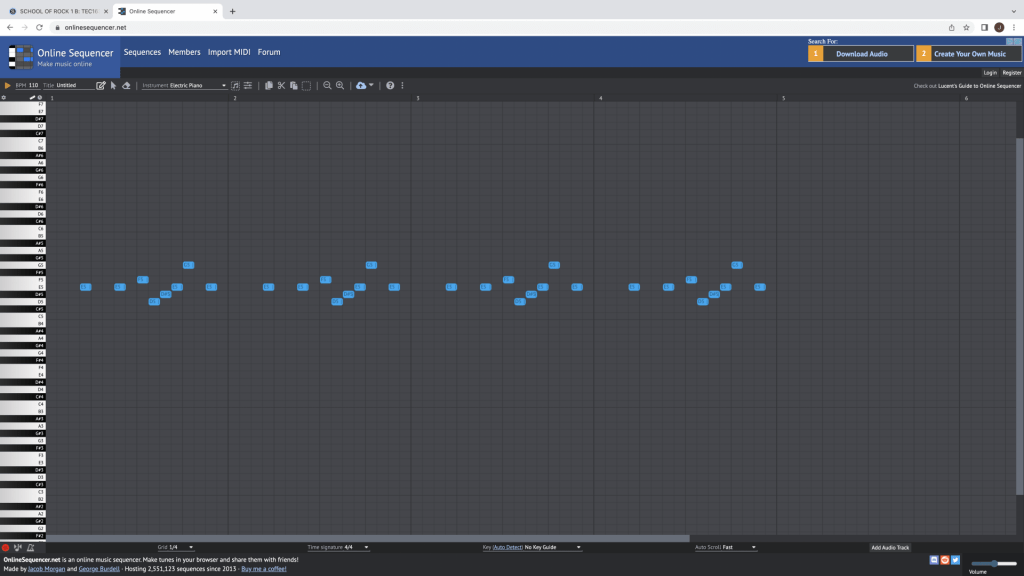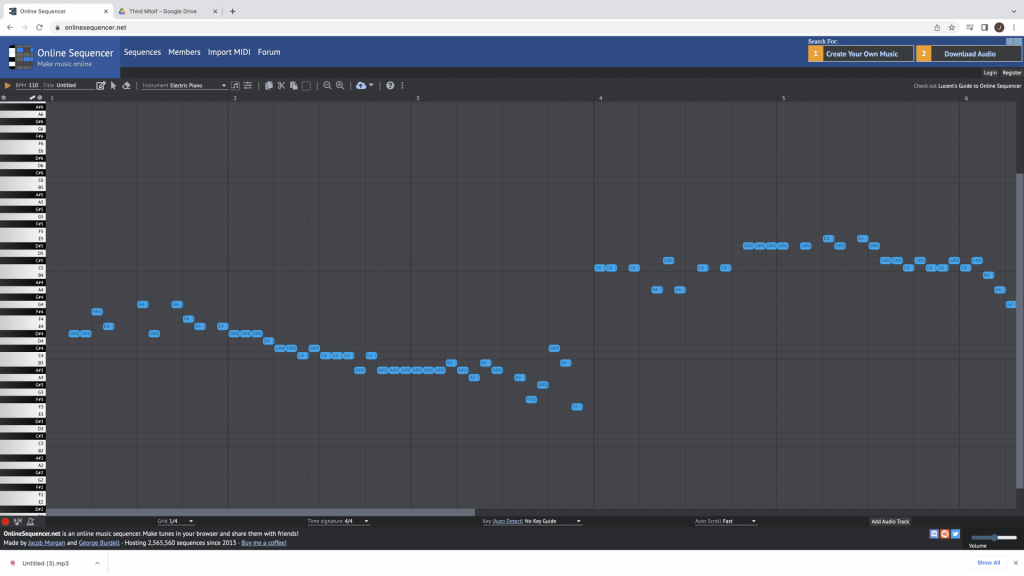Summary
My idea for this project was to create a short and fast paced riff that repeated itself. This was to create a motif that was fast paced and catchy and to make sure it didn’t drag on for too long. I used this online sequencer to create my motif. This sequencer gave me the option to use basically any note out there in any arrangement I wanted. The sequencer also had the bonus of being very easy to use. After I created my composition, I exported as an mp3 file into google drive and linked it to this blog post.
My Motives
My first motif was made of the E, F, D and G notes on the 5th octave. it plays like this: E5, E5, F5, D5, D#5, E5, G5, E5. I spaced these notes out accordingly to create a riff that I thought sounded pretty good. I then had this riff repeat multiple times to create my motif.
My second motif was me just trying to make a longer riff that repeated itself twice.



Feedback
- Write a few comments from other students or advisory members
- Cite the person who shared the comment
- Only use first names
What I Learned & Problems I Solved
What I learned during this project was that a motif doesn’t have to be long and complex. As long as it’s catchy and enjoyable, it can be as short or simple as possible. I also learned that online sequencer is a really good tool, it allowed me to create a motif really quickly and the motif sounded really good. The only problem I had with this project was getting a screenshot. I wasn’t able to figure out how to import it into this blog post. Eventually I figured it out by opening my finder, dragging it onto the desktop, and then importing it into this blog post.
